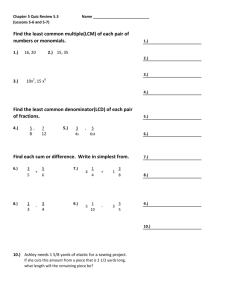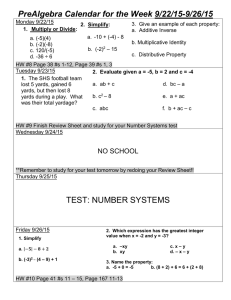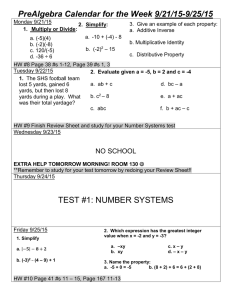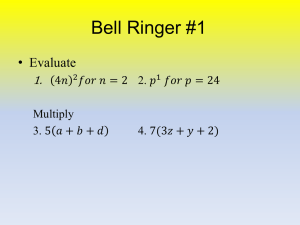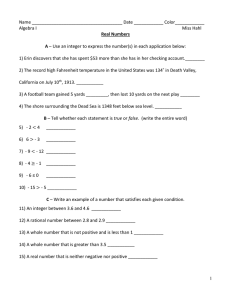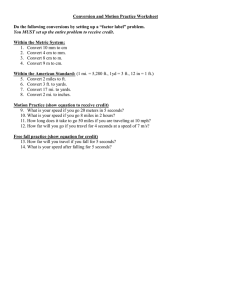mil dot reticle
advertisement
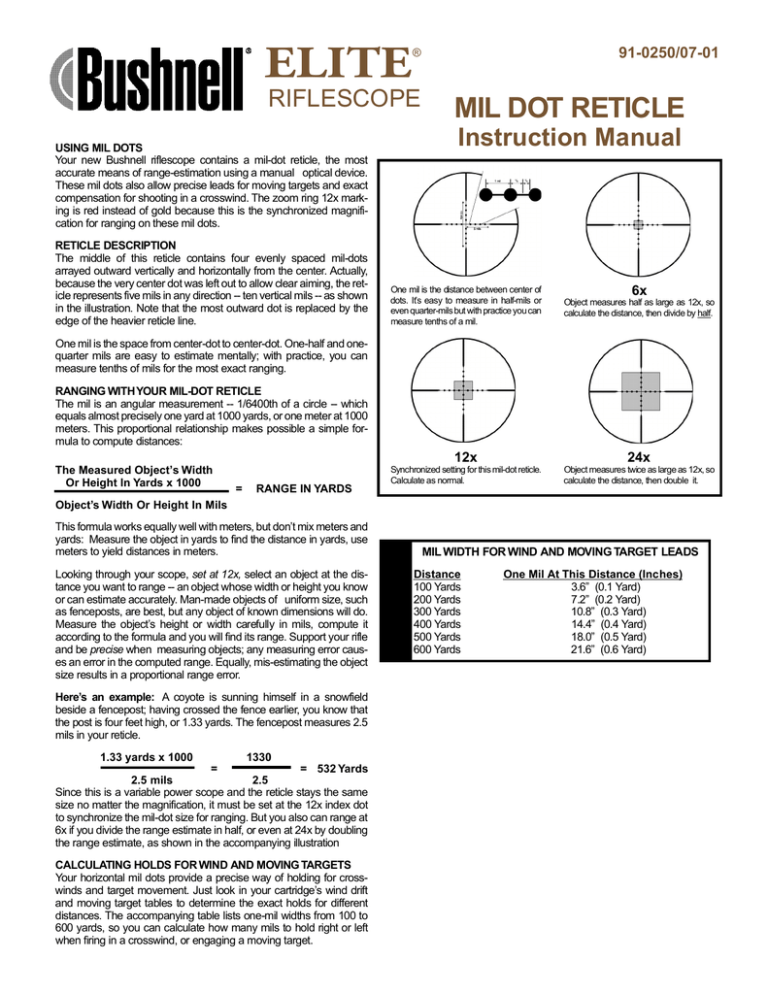
ELITE RIFLESCOPE USING MIL DOTS Your new Bushnell riflescope contains a mil-dot reticle, the most accurate means of range-estimation using a manual optical device. These mil dots also allow precise leads for moving targets and exact compensation for shooting in a crosswind. The zoom ring 12x marking is red instead of gold because this is the synchronized magnification for ranging on these mil dots. RETICLE DESCRIPTION The middle of this reticle contains four evenly spaced mil-dots arrayed outward vertically and horizontally from the center. Actually, because the very center dot was left out to allow clear aiming, the reticle represents five mils in any direction -- ten vertical mils -- as shown in the illustration. Note that the most outward dot is replaced by the edge of the heavier reticle line. 91-0250/07-01 ® MIL DOT RETICLE Instruction Manual One mil is the distance between center of dots. It’s easy to measure in half-mils or even quarter-mils but with practice you can measure tenths of a mil. 6x Object measures half as large as 12x, so calculate the distance, then divide by half. One mil is the space from center-dot to center-dot. One-half and onequarter mils are easy to estimate mentally; with practice, you can measure tenths of mils for the most exact ranging. RANGING WITH YOUR MIL-DOT RETICLE The mil is an angular measurement -- 1/6400th of a circle -- which equals almost precisely one yard at 1000 yards, or one meter at 1000 meters. This proportional relationship makes possible a simple formula to compute distances: The Measured Object’s Width Or Height In Yards x 1000 = RANGE IN YARDS 12x 24x Synchronized setting for this mil-dot reticle. Calculate as normal. Object measures twice as large as 12x, so calculate the distance, then double it. Object’s Width Or Height In Mils This formula works equally well with meters, but don’t mix meters and yards: Measure the object in yards to find the distance in yards, use meters to yield distances in meters. Looking through your scope, set at 12x, select an object at the distance you want to range -- an object whose width or height you know or can estimate accurately. Man-made objects of uniform size, such as fenceposts, are best, but any object of known dimensions will do. Measure the object’s height or width carefully in mils, compute it according to the formula and you will find its range. Support your rifle and be precise when measuring objects; any measuring error causes an error in the computed range. Equally, mis-estimating the object size results in a proportional range error. Here’s an example: A coyote is sunning himself in a snowfield beside a fencepost; having crossed the fence earlier, you know that the post is four feet high, or 1.33 yards. The fencepost measures 2.5 mils in your reticle. 1.33 yards x 1000 1330 = = 532 Yards 2.5 mils 2.5 Since this is a variable power scope and the reticle stays the same size no matter the magnification, it must be set at the 12x index dot to synchronize the mil-dot size for ranging. But you also can range at 6x if you divide the range estimate in half, or even at 24x by doubling the range estimate, as shown in the accompanying illustration CALCULATING HOLDS FOR WIND AND MOVING TARGETS Your horizontal mil dots provide a precise way of holding for crosswinds and target movement. Just look in your cartridge’s wind drift and moving target tables to determine the exact holds for different distances. The accompanying table lists one-mil widths from 100 to 600 yards, so you can calculate how many mils to hold right or left when firing in a crosswind, or engaging a moving target. MIL WIDTH FOR WIND AND MOVING TARGET LEADS Distance 100 Yards 200 Yards 300 Yards 400 Yards 500 Yards 600 Yards One Mil At This Distance (Inches) 3.6” (0.1 Yard) 7.2” (0.2 Yard) 10.8” (0.3 Yard) 14.4” (0.4 Yard) 18.0” (0.5 Yard) 21.6” (0.6 Yard)

